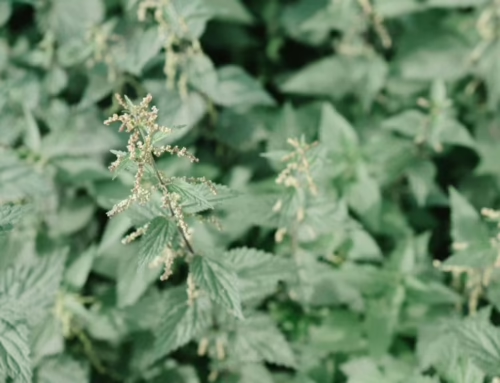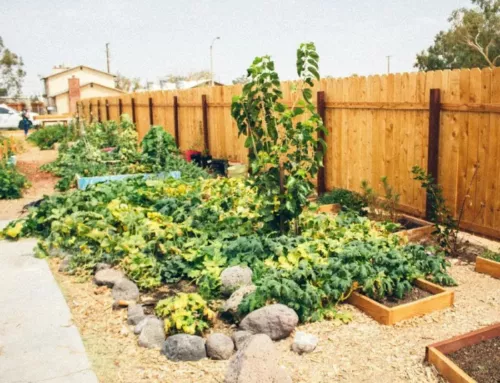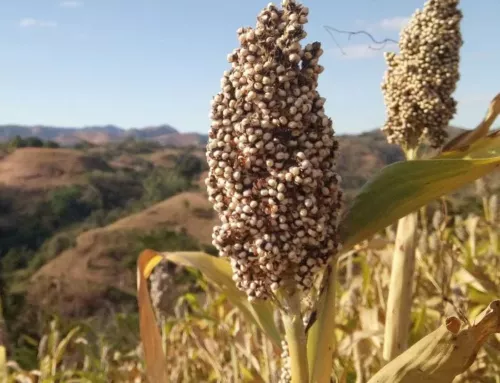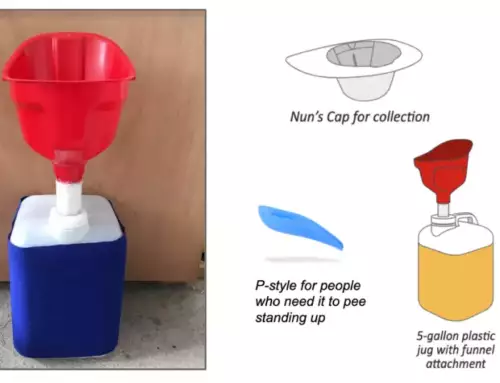By Caro Roszell, NOFA/Mass Education Director
There is not yet a significant body of research on barriers to adoption of healthy soils practices in agriculture, but initial investigations reveal that the primary barrier to adoption is farmer uncertainty about outcomes of practices adoption.
According to a report by The Nature Conservancy, reThink Soil: A Roadmap to U.S. Soil Health,
“Widespread adoption of soil health systems appears unlikely unless the multiple barriers to adoption are systemically identified and addressed. These barriers, which are undeniably complex, cluster around three key areas: science, economics, and policy.
The science of soil health is still evolving… As a result, soil health is not easily measured, thus limiting the ability for timely management responses by farmers, or the development of useful policy and economic signals in the marketplace. Likewise, farmers contemplating this change need more evidence and demonstration of operational strategies locally tailored for integrating specific soil health practices on their farms.
Second, current business models between landowners, farmers, and agricultural retailers do not adequately encourage soil health management. Conservation systems and practices to restore soil health introduce potential operational complexities and may require farmers to make higher capital or variable cost outlays in the short term. Recouping these investments requires a longer planning horizon.
Finally, public policy has not been fully developed and implemented to encourage landowners and farmers to reduce production risk and support soil health investments requiring longer planning horizons.”
NOFA/Mass has been convening efforts across the extended NOFA community of seven states (and affiliated organizations) to investigate both the ways that farmers in the Northeast are innovating in soil health practices, as well as the needs and challenges they encounter in the adoption of healthy soils practices.

Photo credit: Assawaga Farm Instagram page
In a series of six farmer round-table discussions in six states facilitated by NOFA chapters in 2019, 192 farmers (mostly organic or organic-leaning vegetable producers) discussed their own barriers and challenges in adopting healthy soils practices. (Report pending, Fall 2020). Farmers were also asked about what kinds of incentives or support would help them implement further healthy soils practices. Designated notetakers recorded 64 specific challenges, needs and/or suggestions for solutions mentioned by farmers in the roundtable discussions.
Education and technical support was by far the biggest need / challenge cited by the farmers who participated in the roundtable discussions, with 27 recorded mentions. The most often cited desired format for learning was farmer-to-farmer (ie peer-to-peer) education, with farmers mentioning farm visits, demonstrations, consultations with experienced farmers, and learning from case studies of real farms.
The most often-mentioned specific education need was efficiency within healthy soils practices. Related topics that came up were transition from a more tillage-based system and scaling up healthy soils practices. Other topics mentioned included cover crop termination, carbon cycling, links/ correlations between healthy soils and healthy foods, “unlearning conventional practices,” and the financials / return on investment of healthy soils practices. Technical support topics included support for soil and water quality testing and monitoring.
Incentives were the second most-discussed topic. Commentary showed a preference for payment for practice models, while a smaller number of farmers suggested that payments should be outcome-based or a hybrid of both practice and outcome based. Farmers also discussed the need for more investment in local food systems and in smaller-scale farms. Grants for equipment, to subsidize the lower profitability transition phase (from conventional tillage to reduced/minimum tillage), or for experimenting with new practices were proposed. Farmers were also specifically interested in funding to help pay for cover crops and installation of perennial buffer strips/windbreaks.
Related to incentives, the cost of implementation as a specific barrier was the third most-discussed topic, followed by access to equipment. The most-mentioned implementation cost was the increased labor costs associated with healthy soils practices. Other problems included market pressure to put all land into production (i.e. lost potential revenue from cash crops when land was used for fallow or cover crops), and the cost of investing in new tools and implements. Other barriers mentioned by farmers included land access, the burden of student loan debt, and a shortage of time for learning and trying something new.
Initial results from a 2020 NOFA survey* also reinforce the importance of education to the organic farming community in improving soil health. Farmers were asked to rate a variety of educational opportunities and incentives on a 1-5 scale, with 1 being “not very useful” and 5 being “extremely useful.” Farmers evaluated education (3.8-4.3 average depending on format) as more useful than payments for outcome (market rate of $15/ 1% SOM) stored (3.3 average rating).
Farmers rated peer-to-peer education and consults more highly than farm visits from technicians, with “Educational workshops/webinars on healthy soils practices from authorities/experts like NRCS, Extension or an agronomist with your Conservation District” receiving an average rating of 3.8 compared to “Farmer to Farmer educational workshops/webinars on healthy soils practices organized by farmer networks like NOFA, Young Farmers Network or CRAFT” which received an average rating of 4.2. Technical visits to the farm were equally valued (average rating of 4) whether the technical advisor was a “farmer experienced in tillage reduction or other healthy soils practices” hired to visit farms or “a soil health technical advisor from a farmer network like PASA, NOFA or Young Farmers Network.” These farmer / farmer network consults were rated as slightly more useful than farm visits by a technical advisor “from NRCS, Extension or your local state Department of Agriculture.”

Farmers seem to prefer peer-to-peer education, like the soil health field day events that NOFA offers regionally
Interestingly, one incentive we didn’t specifically ask about came up repeatedly in the comments section: covering the costs of soil testing. Two respondents left comments in the “anything else you want us to know” section pointing out that, “I would do more with soil testing if it wasn’t so expensive. Offering no-cost or significantly reduced cost soil testing would be a valuable incentive,” and “My enthusiasm for the $15-20 per acre per 1% SOM payment would mostly depend on who was paying for the soil tests. If the program paid for them, I would do it just to get free soil tests. If I was responsible for them, the payment would barely cover the cost of the soil test.”
Farmers wishing to contribute to the NOFA Farmers Healthy Soils Survey can submit responses here: http://tinyurl.com/y5xyt8od (Survey takes about 6 minutes to complete.)
Based on participation rates alone, farmers in the Northeast sustainable/organic leaning farming community clearly have a strong interest in healthy soils practices, but also express a clear need and desire for education and technical support.
Based on roundtable conversations and initial survey results, programs and agencies interested in supporting this engaged and interested sector of the regional farming community to advance their practices and improve soil health should consider: 1) focusing strategy more heavily on education than payments and incentives 2) centering education around real farms and farmers who have already adopted healthy soils practices via farmer-to-farmer meetings and farm visits and 2) hiring exemplary farmers as technical consultants to provide direct consultation to farmers or to work collaboratively with soil scientists and researchers when providing technical consults. Finally, where incentives are part of an agency or programs, our surveys suggest that incentives to support updated equipment for tillage reduction, to help defray higher labor costs during tillage reduction transition periods, and to cover soil testing would be of particular value and interest to farmers.
In a case study exploring the soil health practices and experiences at Woven Roots Farm that we prepared for the forthcoming Massachusetts Healthy Soils Action Plan (and also published as a separate article in this newsletter), Jen Salinetti (NOFA/Mass Board member) commented on the fact that she and her husband and co-farmer were not eligible for many of the existing payment for practices or other incentives for healthy soils practices due to the size of the land they own (5 acres, with an additional 5 acres leased). Now in their 20th year farming, they have long been excluded from beginning farmer incentives as well. However, with exceptional soil health outcomes and a high gross revenue per acre, Jen and Pete are well poised to offer consultation to farmers (and indeed, receive many requests for such help). Yet, few beginning farmers could afford to pay Jen and Pete for the real value of their guidance– and without being paid, it would be hard for them to justify taking time away from their farms. (Read the rest of the case study by clicking the accompanying article link above.)
The answer is clear: programs that pay experienced farmers with proven healthy soils outcomes, like Jen and Pete, a fair rate to consult with beginning farmers who would like to adopt no-till / min-till methods would go far to accelerate healthy soils adoption in the Northeast among the community of farmers who are already engaged and curious about–yet uncertain of how to proceed with–healthy soils.
*Footnote: Survey was released in July 2020 and distributed by all seven NOFA chapters via NOFA listservs and social media as well as via the UMass Extension contact lists and regional farmer-managed listservs such as CRAFT. As of September 22 2020, the survey had 59 responses, 81.4% based in Massachusetts. Respondents were 55.9% vegetable farmers, 11.9% poultry / livestock and the remainder distributed across orchard, berry, medicinal, hay and other enterprises. Respondents had an average of 20 years of experience farming and were cultivating an average of 16.2 acres.





